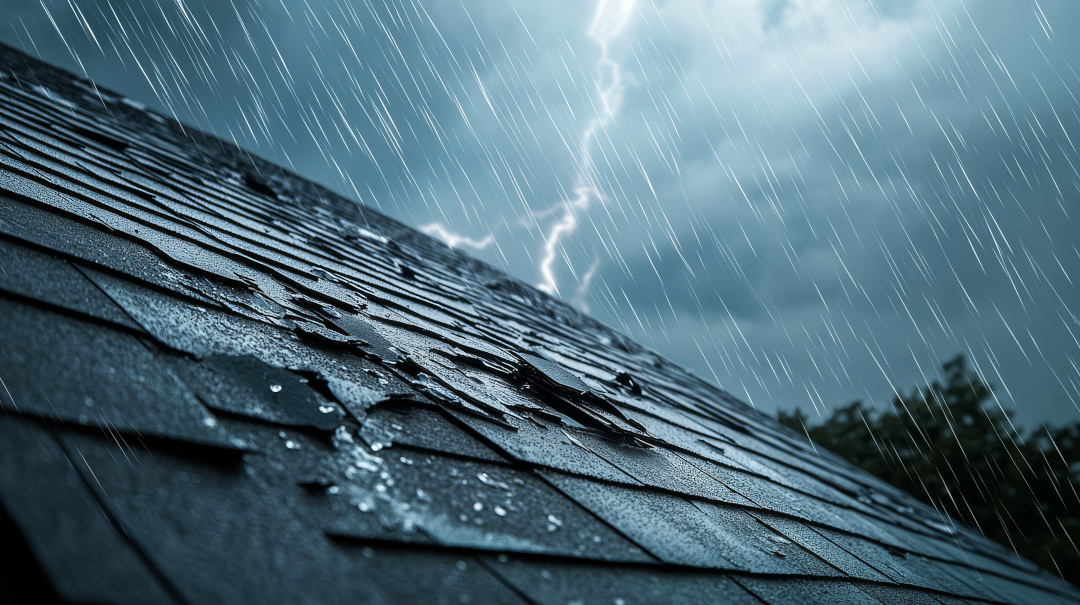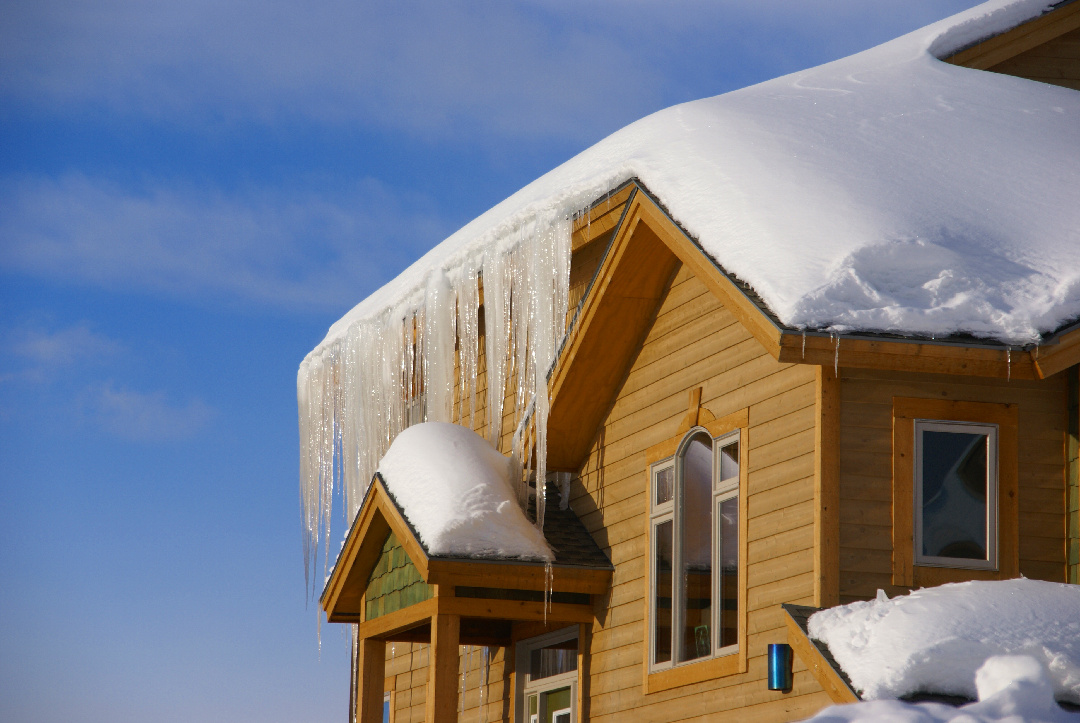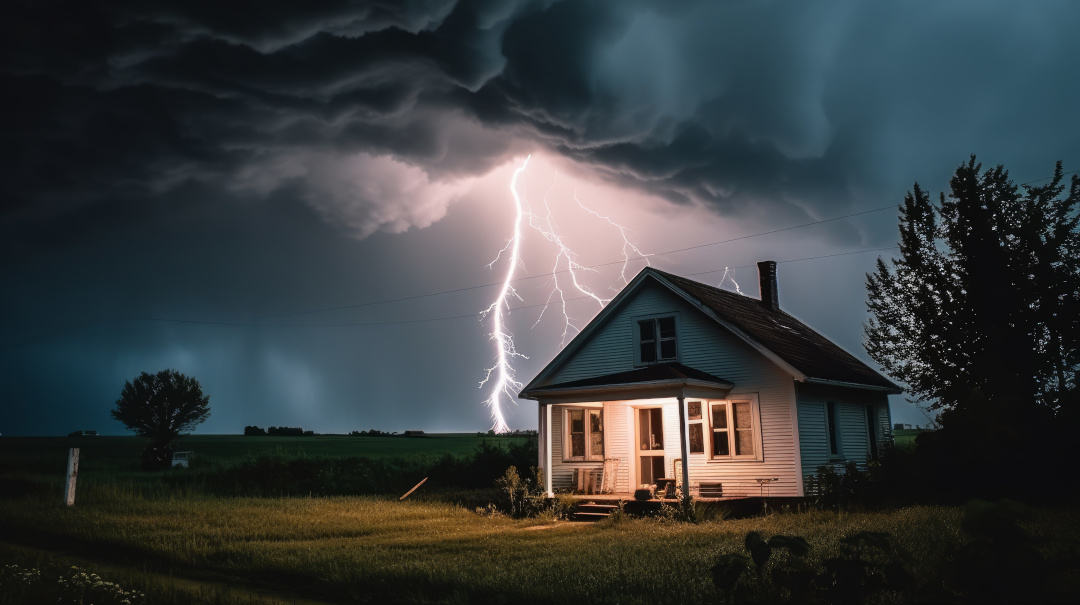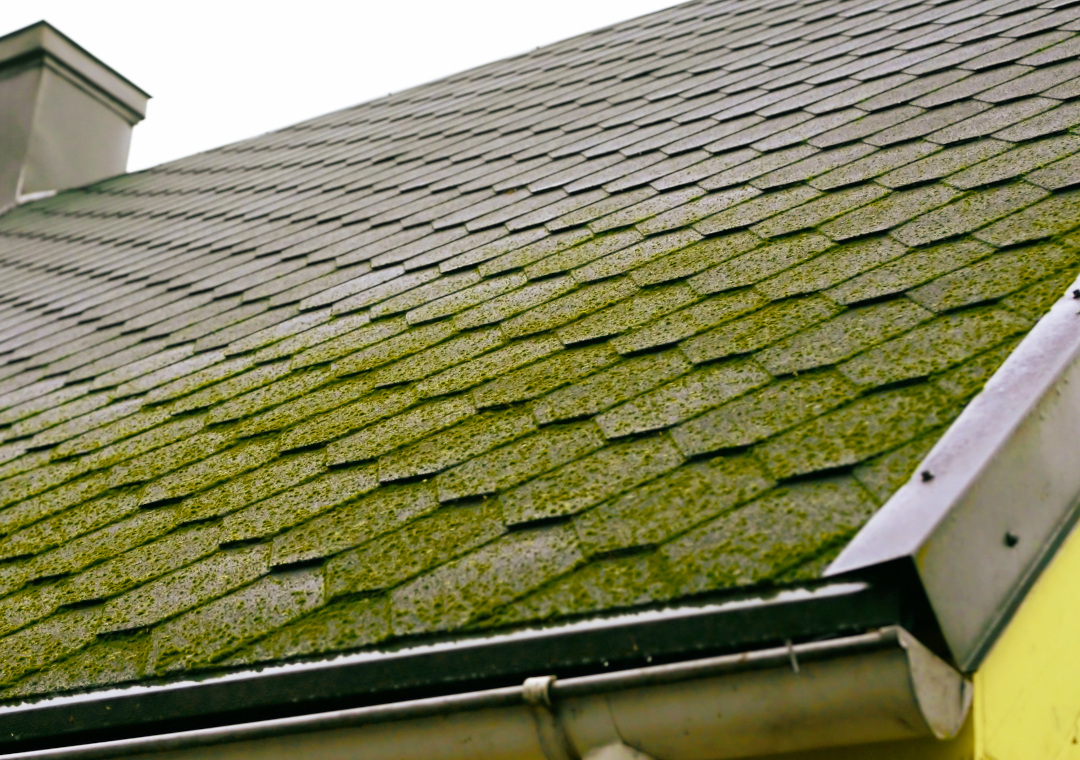
Learn about issues caused by trapped moisture when it matters most – coming out of the long winter months.
Winter weather is harsh on roofs, often causing both visible and unseen damage. As the snow and ice start to melt, be on the lookout for possible problems that cropped up while your roof was covered in a layer of snow.
One common problem many homeowners face is when water becomes trapped inside the roof. This causes leaking and damages the insulation, attics and ceilings. Here’s how to identify trapped moisture, the resulting damage and solutions.
Signs of Trapped Moisture
Moisture commonly enters your roof and attic when the temperatures are very cold. The cold temperatures cause condensation on cold areas of the house, especially those prone to shade. Dampness and water accumulation can quickly turn into unsightly black stains or eventually mold, so it’s important to take action right away.
As soon as you suspect you may have a moisture problem, check for some of the following tell-tale signs to determine the location and extent of the damage. Some indications include:
• Dark stains
• Mold or a musty smell
• Rotted wood
• Wet or moist insulation
• Frost or ice buildup on roofing nails and sheathing
• Rusted metal
One or more of these signs may indicate a bigger problem – namely, moisture entering from outside. This will need to be handled immediately to prevent additional damage.
Damage from Moisture and Condensation
When water becomes trapped in the roof, it’s often not immediately apparent. During the winter months, trapped water can freeze and expand several times, causing cracks to slowly form in your roof. As time passes, this can lead to leaks and more visible damage.
If trapped moisture goes unchecked, the insulation right below the roof’s membrane becomes saturated. When insulation is wet, it ceases to function and also increases the weight on the building’s structural system. With time, the moisture will reach the roof deck and enter the building, often causing extreme damage and expense.
Wet insulation will also cause increased strain on HVAC systems, making them work harder. Heating your home or building will become more expensive as the insulation is no longer protecting the structure’s interior from outside temperatures.
Solutions and Prevention
Regular inspections: Always make sure to have regular inspections and roof maintenance, especially during and after seasons of extreme weather. It’s best to catch any trapped moisture before it becomes a bigger leak problem.
Insulation: Ensure that you have enough insulation and that it hasn’t been damaged in any way by condensation.
Ventilation: Vents should be routed outdoors and not into the attic. If your ventilation system sends hot air into the attic, you’ll need to update it so the vents exit the home completely.
Snow removal: If it’s practical and safe in your location, remove snow in order to prevent ice dams so that water can escape.
As always, if you suspect any damage to your roof, call a roofing expert ASAP before the problem escalates. Our experts at Enterprise Roofing are always ready to answer your call! Contact us at 937-298-8664 or request a quote online today.

Essential Roofing Considerations for Springboro, Ohio Homeowners

The Cost of Neglect: Why Year-Round Roof Maintenance Saves Money

Understanding & Preventing Ice Dams to Protect Your Home

Storm Chasers & Insurance Trends: What Homeowners Need to Know

